Professor discovers new use for laser in art world
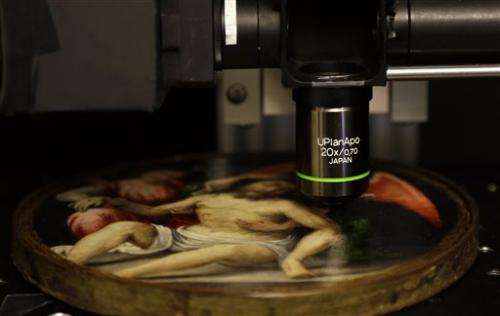
A U.S. professor who developed a laser to study melanoma has discovered a new use for it: uncovering what's underneath artwork without damaging the pieces.
Dr. Warren S. Warren was at the National Gallery in London, looking at an exhibit on art forgeries, when he realized that the art world used imaging technologies that were 30 or 40 years old. So he began investigating whether lasers could be used to safely uncover the mysteries underneath layers of paint.
So far, the answer is a qualified yes.
Warren and others in Duke University's Center for Molecular and Biomedical Imaging, which he leads, have found they can use Warren's pump-probe laser to create three-dimensional cross-sections of art that let researchers see colors and layers and maybe, at some point, discover the source of materials.
"It's showing some real promise, and that's exciting," said John Delaney, senior imaging scientist in the conservation division of the National Gallery of Art in Washington, D.C. Delaney, who researches how to adapt noninvasive analytical imaging methods to help identify and map artists' materials, has seen the laser system at work.
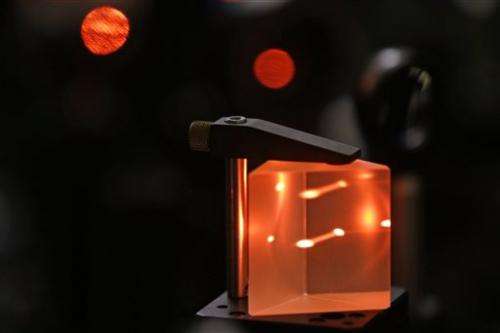
The N.C. Museum of Art's 14th-century "Crucifixion" by Puccio Capanna was the first painting to get a pump-probe laser exam. It revealed a thick layer of lapis lazuli over Madonna's mantle, said William Brown, the museum's chief conservator. Typically, that blue is achieved with a layer of the less expensive azurite, covered with a thin layer of lapis, which was more expensive than gold at the time, he said.
"This tells us it was a really important painting," said Brown, adding that it could be part of an altarpiece at the Vatican.
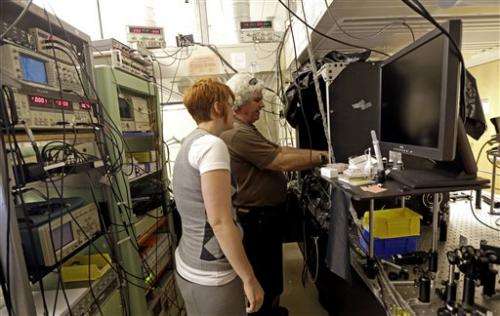
Typically, an art conservationist uses a scalpel to remove tiny samples from a painting to learn more about both the painting and the materials used. That method damages the painting and is limited in where a conservationist can nick at the paint—corners and background, for example, and but not faces.
The pump-probe laser system provides a three-dimensional view of any part of a painting without taking a chip. Researchers can zoom in and out, like looking at a layer cake, and separate colors to see what was originally on the canvas.
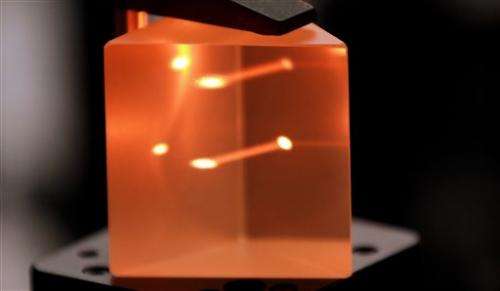
"Through these techniques, you're also understanding the technology that went into the creation of these paintings," Brown said. "And you can chart the whole history of the world through technology and technology innovations. It affects the economy, it affects everything."
The laser system is attracting attention from other conservationists, including those who care for the Dead Sea Scrolls, Warren said. They want to know if the pump-probe can let them read what's in scrolls that are too fragile to unwind.
-
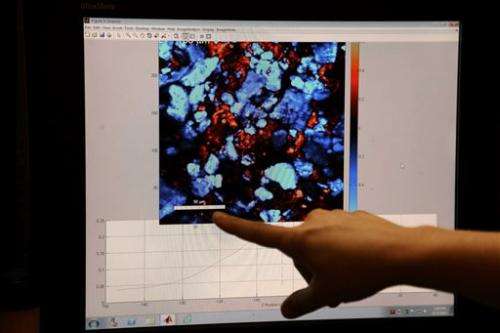
In this Thursday, June 27, 2013 photo, senior grad student Tana Viilafona points to information gathered using lasers to examine artwork at Duke University in Durham, N.C. The North Carolina Museum of Art is working with Duke University's Center for Molecular and Biomolecular Imaging using pump-probe lasers to clean and examine art. Pump-probe laser imaging is a technique originally designed by Dr. Warren S. Warren, director of CMBI at Duke, to use in melanoma diagnoses. The technology is now being applied to art, allowing art conservators to better recognize the paints or other materials used when the work was originally created. (AP Photo/Gerry Broome) -
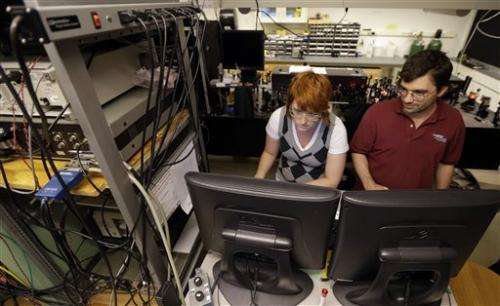
In this Thursday, June 27, 2013 photo, senior grad student Tana Viilafona and associate research professor Martin Fisher examine computer generated information at Duke University in Durham, N.C. The North Carolina Museum of Art is working with Duke University's Center for Molecular and Biomolecular Imaging using pump-probe lasers to clean and examine art. Pump-probe laser imaging is a technique originally designed by Dr. Warren S. Warren, director of CMBI at Duke, to use in melanoma diagnoses. The technology is now being applied to art, allowing art conservators to better recognize the paints or other materials used when the work was originally created. (AP Photo/Gerry Broome) -
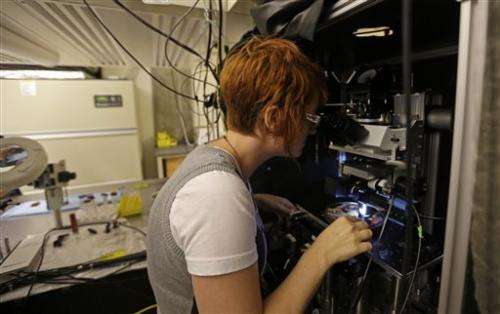
In this Thursday, June 27, 2013 photo, senior grad student Tana Viilafona examines a painting under a microscope at Duke University in Durham, N.C. The North Carolina Museum of Art is working with Duke University's Center for Molecular and Biomolecular Imaging using pump-probe lasers to clean and examine art. Pump-probe laser imaging is a technique originally designed by Dr. Warren S. Warren, director of CMBI at Duke, to use in melanoma diagnoses. The technology is now being applied to art, allowing art conservators to better recognize the paints or other materials used when the work was originally created. (AP Photo/Gerry Broome) -
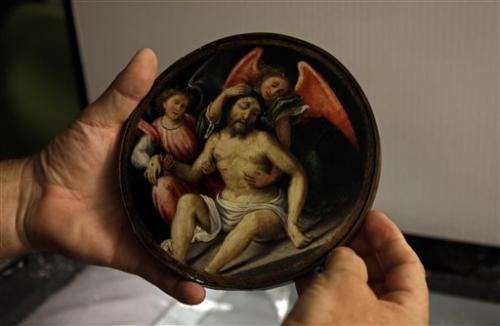
In this Thursday, June 27, 2013 photo, Bill Bowman, chief conservator at the North Carolina Museum of Art, holds a Lorenzo Lotto painting from the Renaissance at Duke University in Durham, N.C. The North Carolina Museum of Art is working with Duke University's Center for Molecular and Biomolecular Imaging using pump-probe lasers to clean and examine art. Pump-probe laser imaging is a technique originally designed by Dr. Warren S. Warren, director of CMBI at Duke, to use in melanoma diagnoses. The technology is now being applied to art, allowing art conservators to better recognize the paints or other materials used when the work was originally created. (AP Photo/Gerry Broome)
"Nothing has to be perfect," Delaney said. "We're looking for what can help us solve problems that we don't have a good way to solve now. And this shows some potential."
© 2013 The Associated Press. All rights reserved.


















